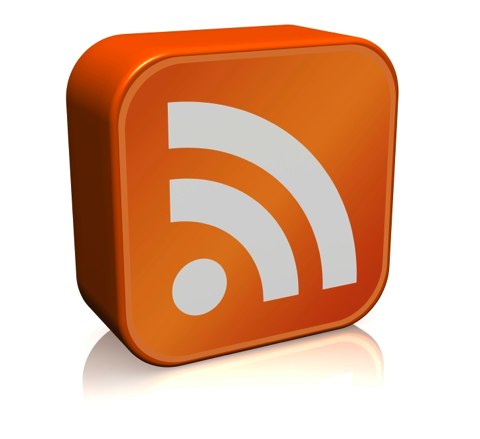One of the buzz words in education today is the PLN. This acronym stands for Personal Learning Network or Professional Learning Network, depending on who you talk to. It includes teachers in your building and across the district. However, you can also build connections all over the world. There are many Web 2.0 tools such as social media (Facebook, Twitter, LinkedIn, etc.), blogs, and wikis that allow these connections to support your teaching in the classroom. More and more teachers use their PLN for "professional development" purposes. The best way to start your own PLN is to collaborate with teachers in your district. If you are looking to spread out a bit more, start by "subscribing" to educational blogs that you are interested in.
If you aren't sure where to start, you can take this FREE Web 2.0 Tools eCourse! Basically, you will get a email each day for two weeks. Each email will outline one specific Web 2.0 tool that you could use to begin building your PLN.
RSS stands for Real Simple Syndication, and it has totally changed how people access information. Rather than going to all of the sources, you can subscribe to their "feeds" and let the information come to you. The video below gives an overview of how to do this with a service called Google Reader. If you have a Google account, and all of you do, then you already have Google Reader.
Google Reader is just one of many news aggregators. Some are web-based, some are plugins or extensions, and some are downloaded to your desktop. All of them work basically the same, but Google Reader is very popular, easy to use, and has a great interface. When you visit a blog or website you are interested in "following", look for some type of icon you can click on to subscribe to that site. It may look like one of the ones below, and all blogs will have some type of icon or link to "subscribe to me".
As the video above explained, you can either subscribe directly on the blog or website itself by clicking the appropriate "subscribe" icon, or you can do it through Google Reader by copying and pasting the link. If you are reading this in our SMS Tech Tips blog, you will notice an icon to the right that shows all of the different blogs that we follow.
Some topics these blogs focus on: technology, ed tech, standards-based grading, science, and fantasy football. Derek and I each have a handful of blogs that we visit most often. Even though we have only met a few of these teachers face-to-face, we consider them all part of our PLN.
Recommendations
- Start small! Subscribe to a handful of blogs and get into the habit of visiting Google Reader often. If you don't find yourself interested in the posts, unsubscribe and move on to find something more interesting.
- Feedly is a really cool website that "feeds" off your subscriptions from Google Reader to bring you relevant information. It is much nicer visually compared to Google Reader and gives you easy access to all of your feeds from any computer, smartphone, or tablet. You will need to download their app or plugin, but it's definitely worth it. I use Feedly now more than Google Reader itself. The video below gives a quick overview.
Ideas for Using Google Reader
You can subscribe to many things in addition to blogs and websites. Here are a few examples:
Subscribe to your students
- If you have students write on a blog for any reason (reflection, portfolios, collaborative writing project, etc), you can subscribe to each blog so whenever they write a new post, it will be sent to you without you having to visit each blog periodically.
Subscribe to social bookmarking tags
- Delicious and Diigo are the two major social bookmarking sites where you use tags to organize your bookmarks.
- You can subscribe to a particular tag so whenever someone uses that tag for a site, you get notified.
- You can also add other people to your network and subscribe to their bookmarks. You get notified whenever they save a new bookmark.
- It is possible to subscribe to a feed for a particular web search result.
- This could come in handy if you are researching a particular topic such as "Diet Coke and Mentos Eruptions".
- Use this strategy to make you aware whenever your name appears online.
- You can subscribe to RSS feeds at many photo and video sharing sites keeps you updated when your friends and family add new media online.
- This blog post from Free Technology for Teachers explains how.
- If you use a blog as a class portal to share information with parents, you can suggest that parents subscribe to your blog so they will get the updated information quickly without having to visit the blog directly.
Additional Resources
Develop a PLN
Getting started with Google Reader
What's in your Reader?
How-To video for organizing blogs in Google Reader
Directory of free news RSS feeds
"RSS in Plain English" YouTube Video
Final thought...
While Derek and I use a lot of tech tools, there are a handful of essentials that we could not do without. We are big fans of Google Docs, Google Calendar, and Dropbox. I would also add Google Reader (and Feedly) to that list. I cannot stress how useful this can be. Not only have I learned a lot from teachers all over the world, but the information I learn keeps me motivated and eager to learn more.


The quality of information that you are providing is simply marvelous.
ReplyDeletehttp://www.yazlawsuitsnews.com/
After a thirty minute session with two outstanding teachers, I decided that a blog post detailing blogs and sites would be appropriate!
ReplyDeletedifferentiated instruction strategies